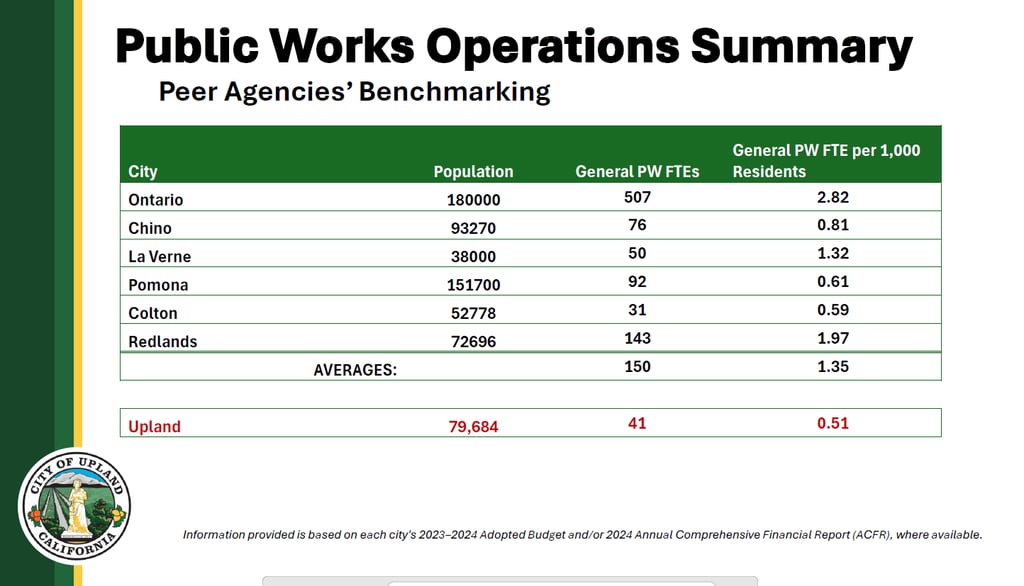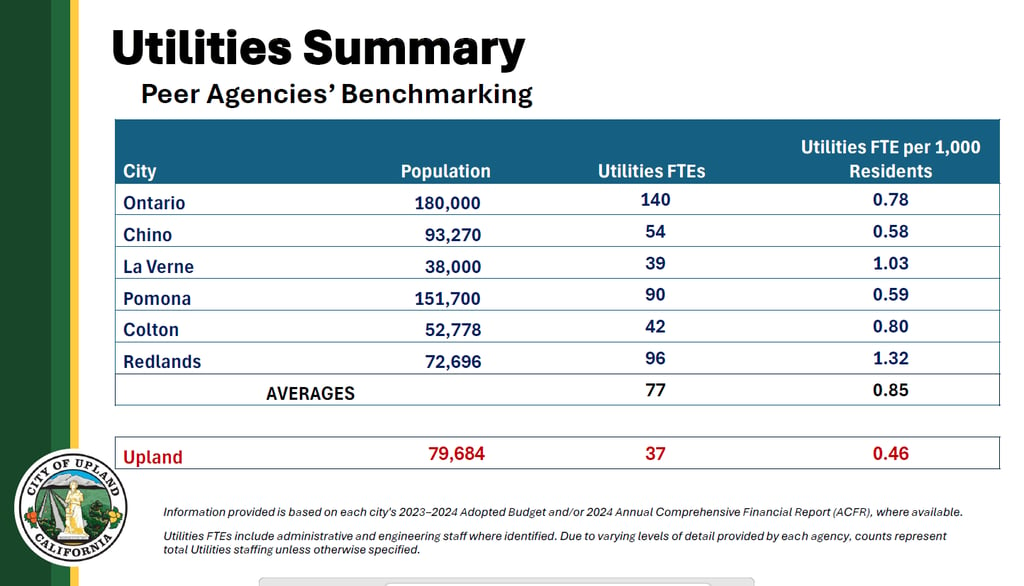Building Upland's Future Part 6: Peer Agency Comparative Analysis
📉 See how Upland stacks up against our neighbors — and why it matters.


Peer Agency Comparative Analysis: Upland’s Staffing Deficit
The Importance of Adequate Staffing
Municipal staffing is not just an internal matter—it’s the foundation upon which residents experience city government. Whether it’s repairing a street, responding to a water main break, maintaining a park, or keeping city facilities functional, staffing levels directly determine the quality, speed, and reliability of service. When staffing lags behind need, the consequences ripple into every corner of community life, eroding both service standards and public trust.
Upland’s Gap Compared to Peer Cities
Analysis of Upland’s staffing relative to peer agencies reveals an unsustainable gap. Neighboring cities average 1.35 Public Works employees per 1,000 residents. Upland has just 0.51—barely a third of that standard. Similarly, in Utilities, Upland staffs 0.46 employees per 1,000 residents, while the regional average is nearly double.
In raw numbers, this translates into a shortfall of roughly 98 positions across Public Works and Utilities compared to where Upland should be. These gaps strain our ability to deliver even baseline services, let alone absorb emergencies, vacancies, or turnover.
Consequences of Staffing Shortages
This deficit has real-world impacts:
Reactive vs. Preventive Work: Crews are forced into reactive maintenance—patching and repairing after failure—rather than preventive planning, which is more efficient and cost-effective.
Growing Backlogs: With over 134 active Capital Improvement Projects valued at $76.5 million, our project pipeline is growing faster than our capacity to manage and deliver them.
Infrastructure Decline: Upland’s Pavement Condition Index currently stands at 57 (“Fair”), but projections show it will fall into the “Poor” category within five years without intervention.
Organizational Weaknesses: Too few supervisors, fragmented accountability for projects, incomplete asset inventories, and difficulty enforcing vendor compliance all compound the challenge.
Workforce Instability: With 38 vacancies (14% of the workforce) and a 31% turnover rate, the city is fighting a revolving door that compounds shortages and drives up costs through overtime and training.
Why This Matters to Residents
For residents, this is not about abstract numbers. It’s about potholes left unfilled, parks not maintained to standard, slower utility response times, and longer delays for capital projects. Every staffing shortfall directly translates into service delays, diminished quality, and higher future costs.






